
Salsa music is a popular style of Latin American music. Because most of the basic musical componentes predates the labeling of salsa, there have been many controversies regarding its origin. Most songs considered as salsa are primarily based on son montuno, with elements of mambo, Latin jazz, bomba, plena and guaracha. All of these elements are adapted to fit the basic son montuno template when performed within the context of salsa.
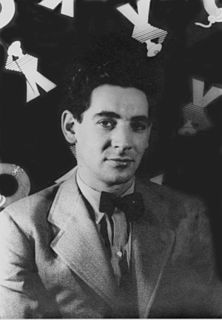
Leonard Bernstein's Sonata for Clarinet and Piano, written during 1941–42 and published in 1942, was Bernstein's first published piece. It is dedicated to clarinetist David Oppenheim, whom Bernstein met while studying conducting with Serge Koussevitzky at Tanglewood during the summers of 1940 and 1941.

Luis Diego Bonilla is an American jazz trombonist of Costa Rican descent. He is also a producer, composer, and educator.

Rebeca Mauleón is an American pianist, composer, arranger and writer, specializing in salsa and other Latin American and Afro-Caribbean music.
Robert Charles Suderburg was an American composer, conductor, and pianist.
Miguel del Águila is an Uruguayan-born American composer of contemporary classical music.

Ernesto Antonio "Tito" Puente, Jr. was an Puerto Rican musician, songwriter, record producer and bandleader. The son of Ernest and Felicia Puente, native Puerto Ricans living in New York City's Spanish Harlem, Puente is often credited as "The Musical Pope", "El Rey de los Timbales" and "The King of Latin Music". He is best known for dance-oriented mambo and Latin jazz compositions that endured over a 50-year career. He and his music appear in many films such as The Mambo Kings and Fernando Trueba's Calle 54. He guest-starred on several television shows, including Sesame Street and The Simpsons two-part episode "Who Shot Mr. Burns?". His most famous song is "Oye Como Va".
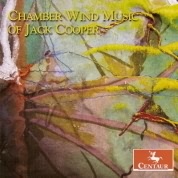
The Chamber Wind Music of Jack Cooper is the first classical/new music studio recording featuring numerous performing artists recording chamber wind music of the composer on the Centaur Records label.

Coming Through Slaughter: The Bolden Legend is the first large ensemble jazz album by composer Dave Lisik. It features trumpeter Tim Hagans, saxophonist Donny McCaslin, trombonist Luis Bonilla, and drummer Matt Wilson. The title and inspiration of the music and recording comes from the novel Coming Through Slaughter from the author Michael Ondaatje.
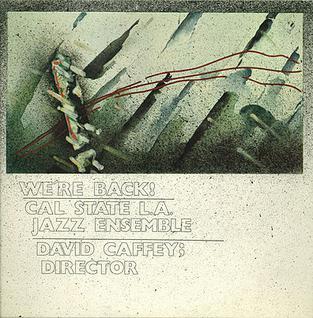
We're Back! is a 1986 album released by the California State University, Los Angeles Jazz Ensemble, it was the springboard for the Bob Curnow's arrangement of the Pat Metheny work The First Circle. The group proved to be one of the finest college jazz orchestras of that era with having placed in the finals of the Pacific Coast Collegiate Jazz Festival. The jazz band had numerous student musicians that have made a name for themselves as professionals to include Sharon Hirata, Luis Bonilla, Phil Feather, Jack Cooper, Charlie Richard, Eric "Bobo" Correa, Mark Gutierrez, Vince Dublino, and José Arellano.

Diversions is a 1987 album released by the California State University, Los Angeles Jazz Ensemble, it featured the Charles Richard Suite for Jazz Orchestra which was premiered by Dave Edwards earlier that year. This group proved to be one of the finest college jazz orchestras of that era with having placed in the finals of the Pacific Coast Collegiate Jazz Festival. The jazz band had numerous student musicians that have made a name for themselves as professionals to include Sharon Hirata, Luis Bonilla, Jack Cooper, Charlie Richard, Eric "Bobo" Correa, Vince Dublino, Alan Parr, and José Arellano.

Monstrosity! is the final LP Vinyl album release by the California State University, Los Angeles Jazz Ensemble before recording on digital/CD format in 1990. In addition to the big band the LP featured the CSULA Jazz Quintet which won the Pacific Coast Collegiate Jazz Festival Combo division for 1988. Los Angeles Times jazz critic Zan Stewart gave the recording four of five stars in his May 1989 review. The jazz band had numerous student musicians that have made a name for themselves as professionals to include Sharon Hirata, Luis Bonilla, Jack Cooper, Charlie Richard, Corey Gemme, Eric "Bobo" Correa, Vince Dublino, Alan Parr, Paul De Castro, Alex Henderson, Gary Smith and José Arellano.

It's About Time is the first CD digital format album release by the California State University, Los Angeles Jazz Ensembles completed in 1990. In addition to two big bands (1989/1990) the CD features the CSULA Jazz Sextet. The jazz bands had numerous student musicians that have made a name for themselves as professionals to include Luis Bonilla, Jack Cooper, Corey Gemme, Alan Parr, Randall Willis, Paul De Castro, Alex Henderson, Sheffer Bruton, Ruben Ramos, and José Arellano.
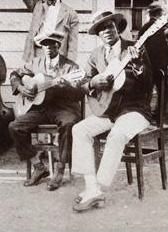
A guajeo is a typical Cuban ostinato melody, most often consisting of arpeggiated chords in syncopated patterns. Some musicians only use the term guajeo for ostinato patterns played specifically by a tres, piano, an instrument of the violin family, or saxophones. Piano guajeos are one of the most recognizable elements of modern-day salsa. Piano guajeos are also known as montunos in North America, or tumbaos in the contemporary Cuban dance music timba.

Jack Cooper is an American composer, arranger, orchestrator, multireedist, and music educator. He has performed with, written music for performed or recorded by internationally known pop, jazz, and classical artists.

Mists: Charles Ives for Jazz Orchestra is an internationally acclaimed jazz album produced by Planet Arts Recordings and released in August 2014. The recording is centered on Charles Ives' art song arranged for 17 piece jazz orchestra by composer Jack Cooper; this is a Third stream approach to jazz made more widely known by earlier band leaders and composers such as Paul Whiteman, Gunther Schuller, George Russell and Don Sebesky. The album is archived in the both the United States Library of Congress and the Deutsche Nationalbibliothek as a historically significant sound recording.
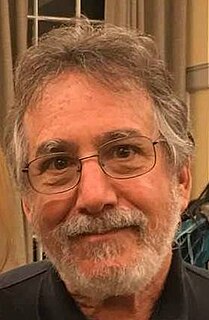
David Froom is an American composer and college professor. Froom has taught at the University of Utah, the Peabody Institute and the University of Maryland, College Park. He has been on the faculty at St. Mary's College of Maryland since 1989. He has received awards and honors from the Guggenheim Foundation, the American Academy of Arts and Letters,, the Fromm Foundation at Harvard, the Koussevitzky Foundation of the Library of Congress, the Barlow Foundation, and is a five-time recipient of an Individual Artist Award from the State of Maryland.

Blues, Ballads and Beyond is the tenth classical/new music studio album from trombonist Mark Hetzler on the Summit Records label. It was critically acclaimed by Classical Musical Sentinel, "He can shape, flex, caress, torture, stress, accent and animate notes on the fly and bring anything he plays to life. All the pieces on this new CD were well chosen to showcase his command of the instrument, and the range of styles he easily slips into is impressive" Numerous prominent performing artists and composers are featured on the recording to include Michael Colgrass, Enrique Crespo, Daniel Schnyder, Robert Suderburg, John Stevens, and Jack Cooper.

A Toda Cuba le Gusta is the first studio album by the Afro-Cuban All Stars, produced by Cuban bandleader and musician Juan de Marcos González and Nick Gold, and released on April 9, 1997 on World Circuit Records.
Geoffrey Gordon is an American composer of classical music.

















